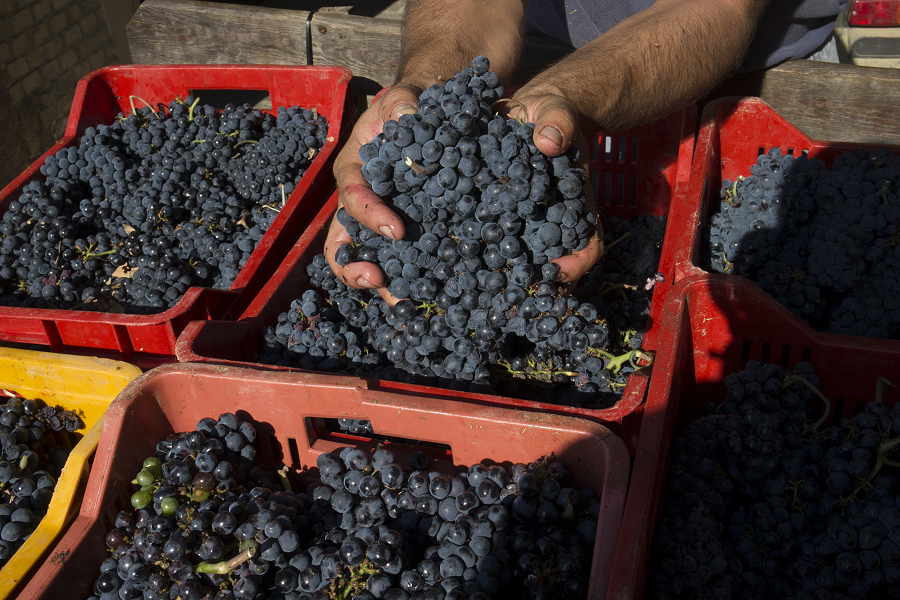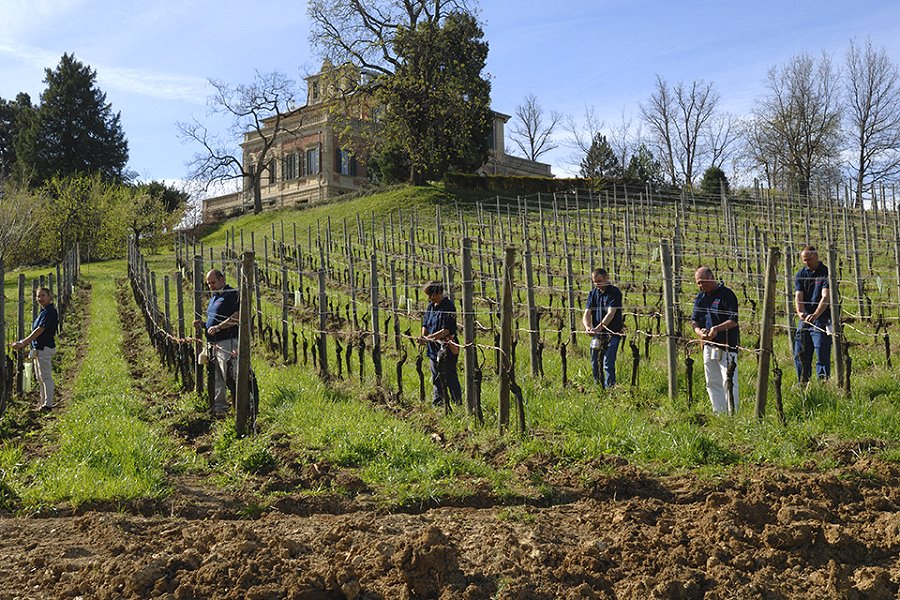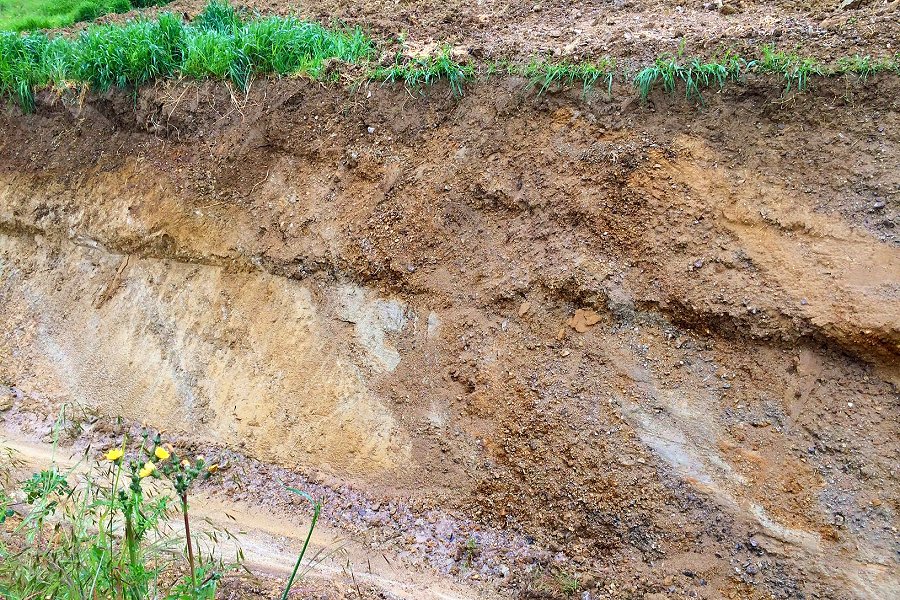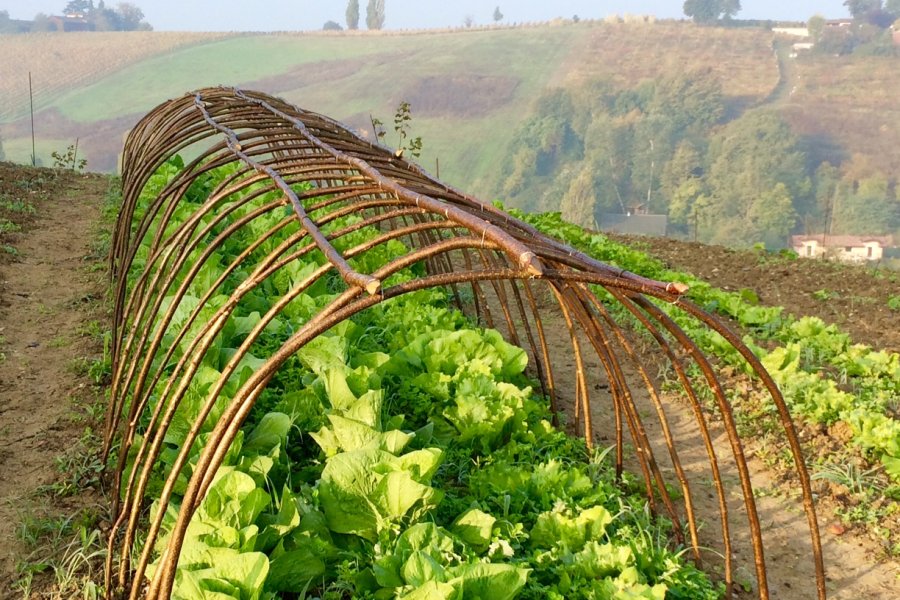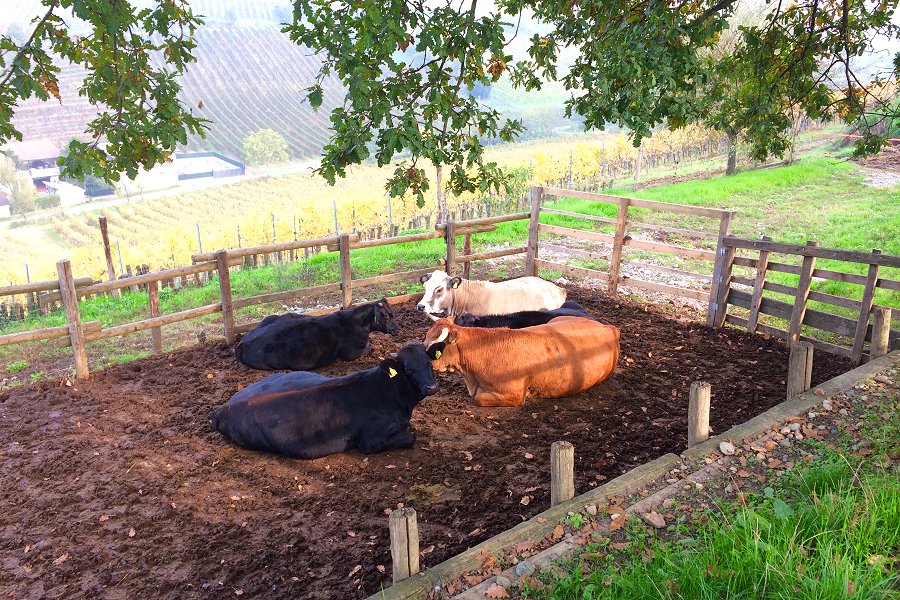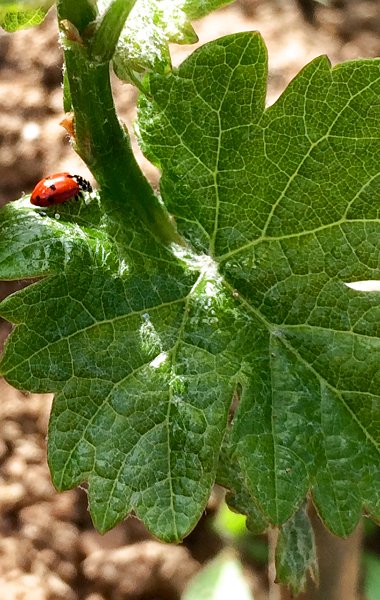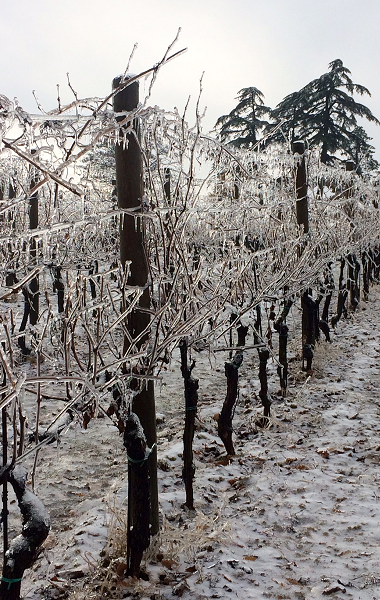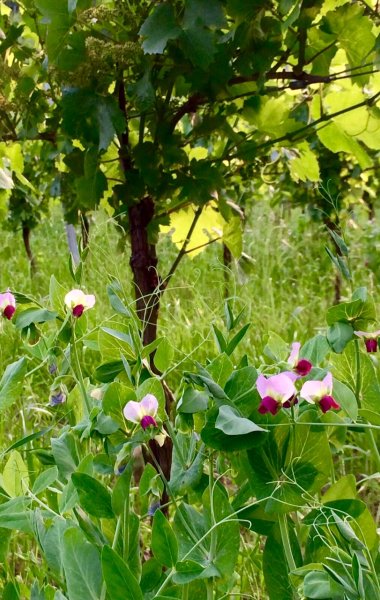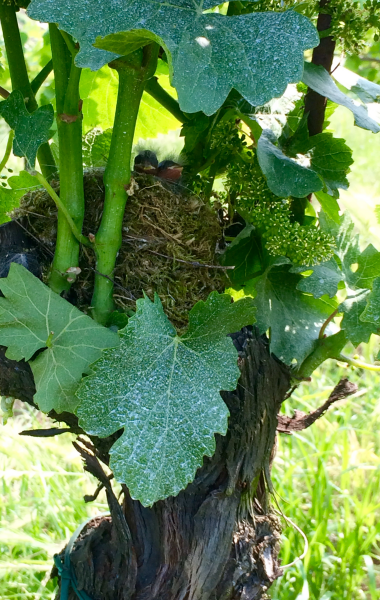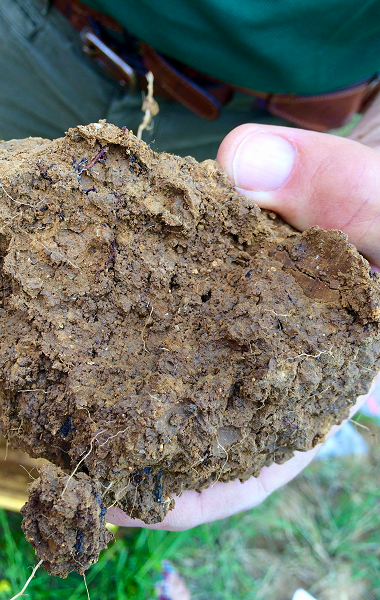We are now officially organic but even before the move, we always made wine with our own grapes which we follow closely throughout the year and harvest by hand in small crates, because we know it takes high quality grapes to make good wine.
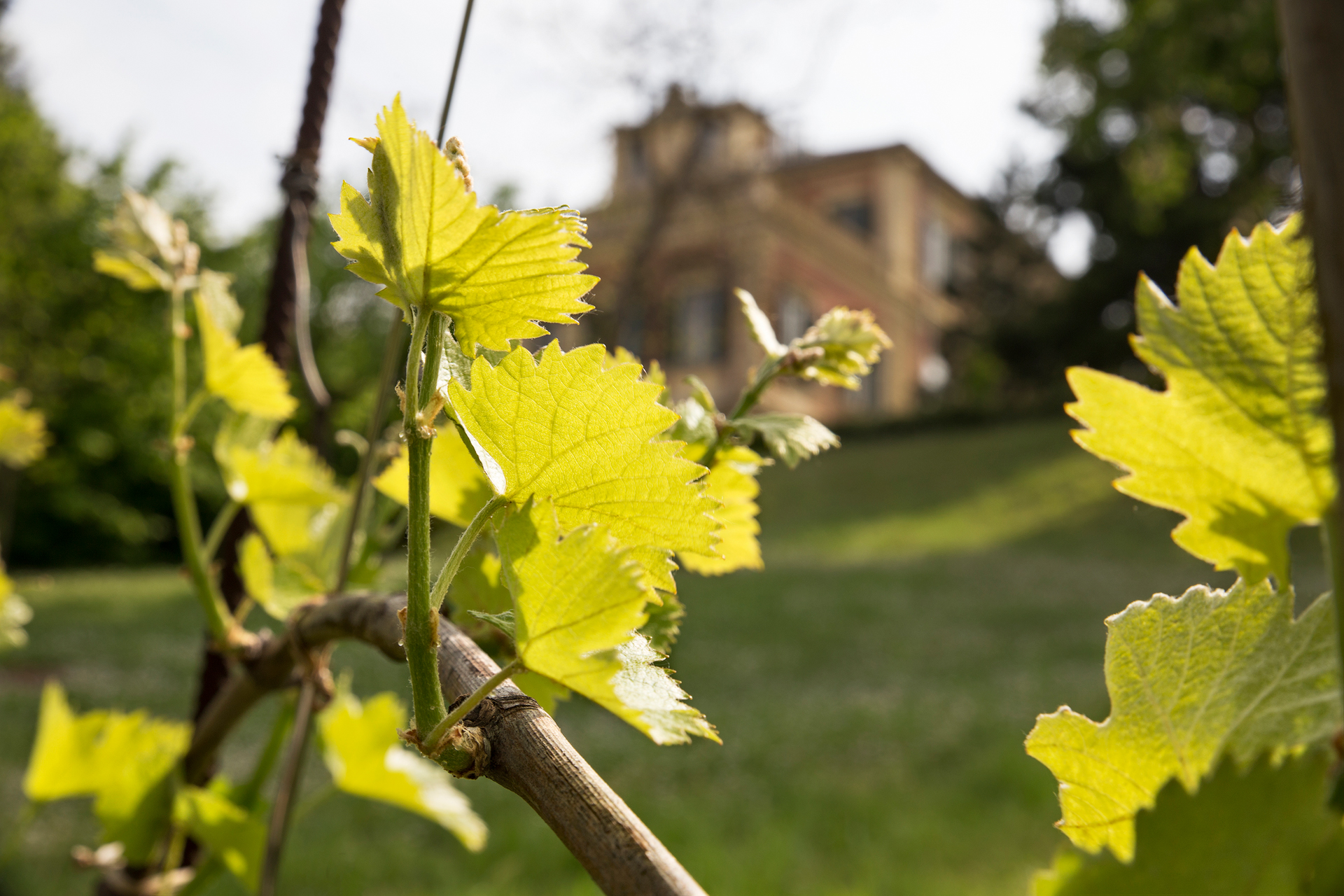
Philosophy
OUR WAY OF WORKING
We like to think our wines are a reflection, an expression of our land. We work with local grape varieties such as Croatina, Uva Rara and Barbera and the more recent arrivals such as Pinot Noir and Riesling, which have become an integral part of the Oltrepò Pavese roster.
A few million years ago, the sea which covered the plain of the river Po, dried up and left different types of terrain in Oltrepò Pavese: red clay, iron ore, marl and lime. The shells one finds in the soil bear witness to this forgotten sea. A good knowledge of the geology of our land, with a view to solar exposition allows us to select the right terrain for the right grape variety.
53 of our 78 acres are used for growing grapes. We also plant wheat and alfalfa in some of our fields and we grow hazel nut trees, fruit trees and keep a vegetable garden in order to maintain biodiversity.
We also have a few goats to keep the woods clean, beehives, and six cows, which provide some of the raw material we use to fertilize our vines.
Biodiversity
It is a common belief that the presence of earthworms in the soil is a sign of its good health. However, while this is true in many instances, it does not apply so literally to grape-growing soil, which is characteristically dry and hence, does not allow for a great proliferation of earthworms.
That being said, the organic compost we use does favor their presence, namely in our older vineyards.
In viticulture, a number of internationally established scientific indicators are used to test the health and vitality of the soil.
– QBS-ar index (organic soil quality – microarhropod sensitivity): with this method of soil evaluation, we count the microarthropods (wingless insects) in a given sample. Species are rated according to sensitivity; the more sensitive, the higher the rating. High numbers, therefore, are a sure sign of soil preservation.
– Shannon Wiener biodiversity index: this system indicates the number of species or genera present in a given sample. The ratings are higher when the species are few and have a higher degree of sensitivity, or lower, when there is a greater number of less sensitive species.
– Pielou’s J or distribution index: this particular method focuses on the ratio of species for a given sample. 10 «x» individuals for one «y» would be a sign of lesser balance than say, five of each within the same sample.
The organic matter (or humus) we produce is another vital factor in the organic process. Ours is made with a combination of discarded grape skins and stems from wine-making, cow manure and green manure, mulch from our trees and cut grass.
The data we obtain with these methods and the analysis of the humus we produce allow for a truly objective, scientific evaluation of the organic quality of our soil. This, in turn, enables us to judge whether organically balanced soils really produce better grapes, and in general, they do. We do our utmost to maintain and develop these harmonious conditions.


